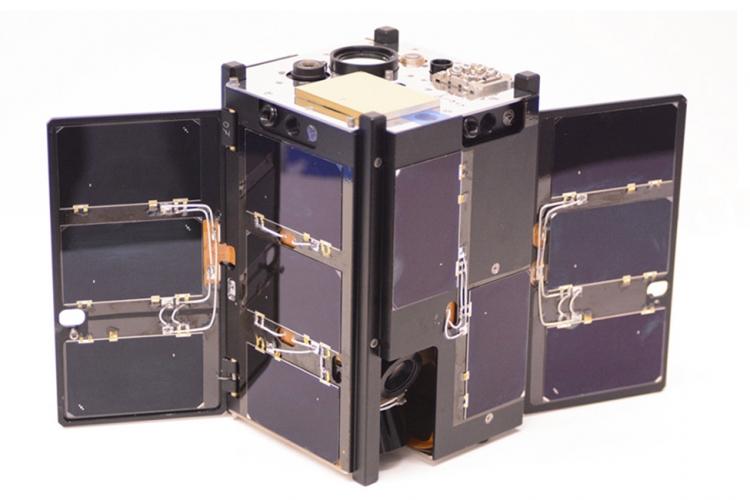Satellites can transmit data directly to ground stations, but to do so requires a direct line-of-sight between the satellite and the receiving ground station, which is only available for a few minutes per day. Dr. Richard Welle, a senior scientist at Aerospace’s Space Science Applications Laboratory, is conducting research on how a network of small satellites, like CubeSats, could use lasers to transmit data to ground stations more efficiently than current systems, which use radio frequency (RF) transmitters.
Optical Communication For Satellite Constellations
In his paper, CubeSat-Based Optical Communication Network for Low Earth Orbit, presented at the 2017 Small Satellite Conference held in Logan, Utah, Welle describes how a constellation of small satellites could receive and transmit data to other satellites within its network, that have immediate access to a ground station. This system could provide extended communication capability between satellites and ground stations, and be a service to any satellite in low Earth orbit (LEO).
According to Welle, technological advances have “allowed satellites to shrink significantly in size, disrupting a legacy industry where traditional satellites cost $500 million to $1 billion to build and launch.” There are increasing opportunities for companies to launch microsatellites for data collection. Small satellites, used as a network to relay data, could also help companies reduce the need for additional or extended ground stations. “An available LEO network could minimize, or even eliminate, the need for new satellite companies to develop their own ground network,” he writes.
The NASA OCSD Program
As part of NASA’s Optical Communication and Sensor Demonstration (OCSD) program, Aerospace has built a CubeSat to demonstrate this technology–called the AeroCube-7. Aerospace’s design is a 1.5-unit CubeSat that is 10x10x15 cm and weighs about 2.3 kg. Each CubeSat carries a laser hard-mounted to its body. The laser is guided by the satellite’s attitude control system (which stabilizes the satellite and points the laser), rather than the larger and more complicated two-axis gimbal control that larger spacecraft use for laser pointing. These pointing capabilities are critical, Welles says, “because it allows the laser beams to be very narrow, which is required to support very high communication rates.”
From the experience with AeroCube-7, and an expectation of increased downlink requirements, there’s “a preference for including laser communication, where appropriate, on future CubeSat missions being developed by Aerospace,” according to Welle.
OCSD consists of two flight units and an engineering model. The engineering model was flown in 2015 to provide risk reduction for the flight units. The flight units were completed in 2016 and successfully launched from NASA’s Wallops Flight Facility in VA in November 2017, aboard Orbital ATK’s Cygnus spacecraft.

